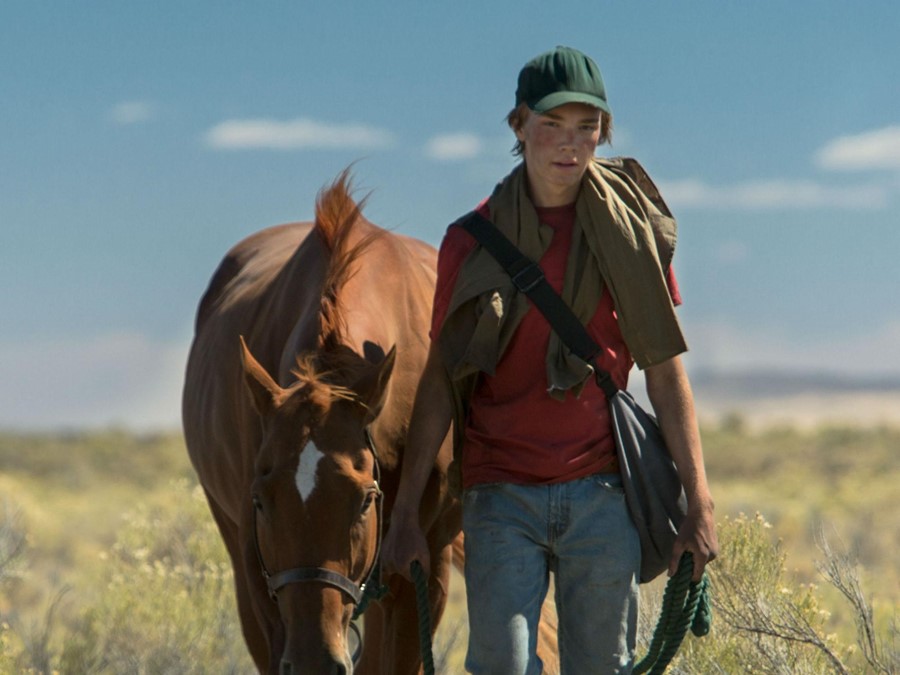Lean on Pete, from 45 Years director Andrew Haigh, is a stunning tale of loneliness and survival in the American Midwest
“When I’m making a film from a book, it’s usually about the central character for me – about my understanding of what drives that person, of what that person needs or wants, what’s pushing him or her forward. When I decided to make 45 Years, which is based on a short story, there was something about the central character of Kate [played by Charlotte Rampling], that I felt I completely understood, and it was the same with Charley.”
I’m on the phone with Andrew Haigh, the British director behind fleeting love story Weekend (2011) and the award-winning drama 45 Years (2015). We are talking about his third feature, Lean on Pete, based on Willy Vlautin’s novel of the same name. It is an entrancing tale centred on a 15-year-old boy named Charley, and the relationship he forms with an aged racehorse, called Lean on Pete.
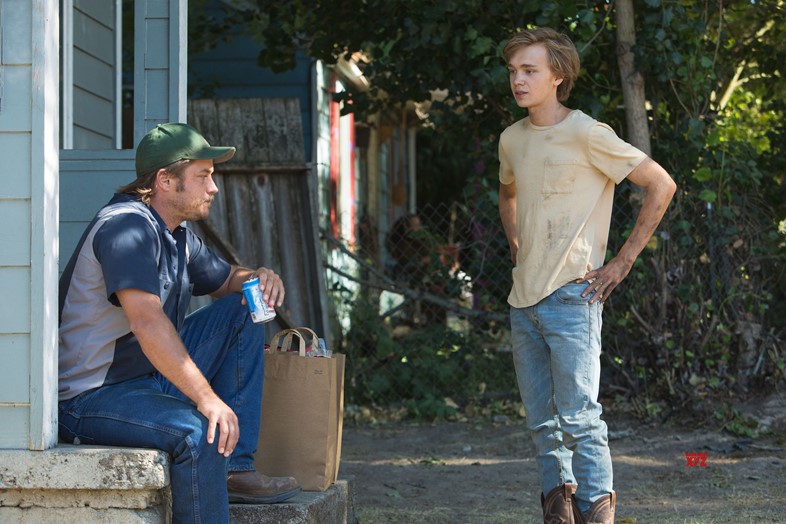
Haigh’s films are difficult to describe – they’re unsentimental, yet spine-tinglingly romantic. They are dramatic, but quietly so, touching on themes of loneliness, love, trust and death. They unfold so slowly and naturally that you’re hardly aware of falling under their spell until the story hits a bump in the road and find yourself weeping tears of utter devastation as if you yourself are the protagonist at their heart.
It comes as no surprise then that characters are so important to the filmmaker’s oeuvre. Our Lean on Pete hero, played by rising star Charlie Plummer, is a relatively normal kid. He’s moved with his father from Washington to a crumbling house in Portland, Oregon, where he’s spending his summer holidays jogging (in preparation for the track team trials at his new high school) and trying to keep his reckless but ultimately loving old man on track. One day he sprints past a local race track, helmed by a grouchy trainer named Del (Steve Buscemi) who’s in need of a helping hand.

The lonesome boy is overjoyed by the prospect of earning money, enticed by the thrill of the sport, and, most of all, beguiled by Del’s elderly steed Pete. He wins the respect of Del, forms a friendship with Del’s jockey, Bonnie (Chloë Sevigny) and, when no one’s looking, shares his innermost thoughts with the chestnut racer. But just as things are looking up, two sinister events threaten the existence of both boy and horse, prompting Charley to venture off across the open plains of the Midwest, horse in tow, in search of a woman he hopes will save them.
The result is a strikingly poetic film that tugs at your heartstrings without ever venturing into Black Beauty territory. Plummer is brilliant in the role, lending a River Phoenix-esque integrity to the ever-hopeful Charley. Echoes of Kes ripple through this man-and-beast narrative, while its stunning depiction of the Midwest landscape, and the kitsch Americana of its roadside diners, evoke Paris, Texas and the photographs of William Eggleston. But Haigh’s authorship is unmistakable – another masterfully told, devastatingly human tale pulled off with aplomb. Here, as the film arrives on UK screens, we catch up with the 45-year-old director to learn more about the minutiae of its realisation – from the perils of filming with horses to the extraordinary capabilities of his leading man.
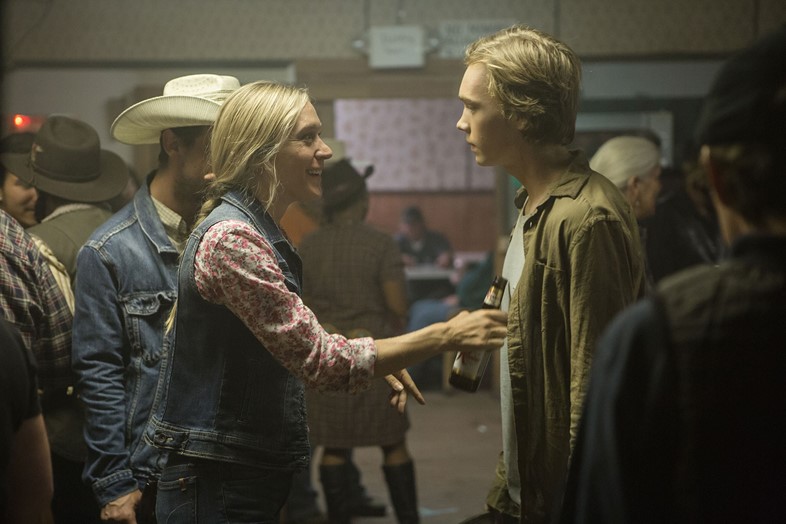
On adapting the book…
“Once we got the rights and I spoke to the author I went out to Portland and I spent some time at the race tracks, just hanging around in the area. Then I went on a road trip for about three months, just sitting in motels and camping. I went all the way through Oregon, Idaho, Colorado... all these states, and tried to soak up the environment. I did some of the writing when I was out there. It’s a slow process trying to feel out what the novel is, but it’s important. Then quite quickly it becomes my own and once I’ve done the first draft I don’t usually go back to the original story.”
On finding his Charley...
“It was actually relatively quick. Myself and the casting director Carmen Cuba put out a call to all the agents and everyone sent their ideas. A lot of kids went on tape and Charlie was probably one of the earlier tapes I saw. The minute I saw him I was like, ‘Yep, this is him’. He read one of the early scenes with his dad, and it was such a surprising performance. He seemed, even on this tape, to get under the surface of the character, to create something that was incredibly subtle. He’s a very talented actor who doesn’t go for the easy emotion, and I didn’t want this film to be easy emotionally. It’s not about ‘now is when you cry’, it’s about something more nuanced than that.”
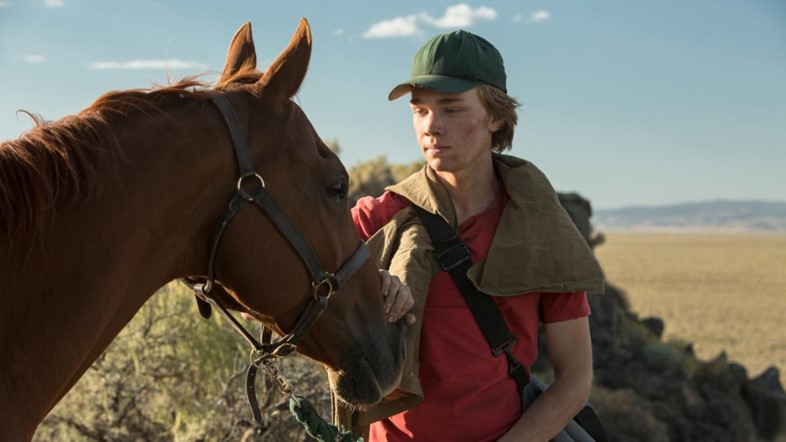
On working with a teenager...
“I was worried at first as I’d made a short film years ago with two 14-year-old kids and it was definitely a bit more challenging. You can’t talk to them like you would an adult, about scenes and ideas. But Charlie is a really smart guy, and was so well-prepared yet open to suggestion, that actually it wasn’t much different to working with Charlotte Rampling.”
On Steve Buscemi and Chloë Sevigny...
“I’ve loved them for a long time. I think they’re both great actors and I love the choices they’ve made with their careers, refusing to do anything they don’t care about. They were both very generous actors, very kind. They came on and knew what was required and how they wanted to bring those characters to life. But they didn’t have huge egos; they knew that this was Charlie’s journey, and that was incredibly helpful.”
On using landscapes to tell a story...
“I find landscape really fascinating, whether it’s enclosed and tight or vast. I think landscape and our surroundings have such a gigantic effect on our emotional state, so for me the landscapes in the film are there to express how Charlie is feeling, help to express his isolation, his fear, his smallness in the world, his aloneness. So, the landscape for me becomes about trying to express the psychology of the character. The right light is also vital – the time of day you shoot subtly dictates the overall tone of the scene.”
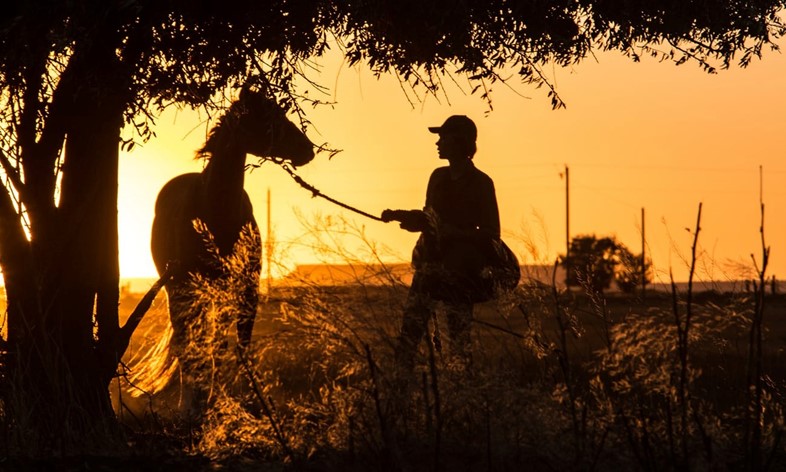
On the film’s striking colour palette...
“We looked at a lot of photography – Stephen Shore and William Eggleston, a lot of the American realist photographers. Their framing was very ordinary but had a real beauty to it. The colour palettes are also very inspiring. I didn’t want it to be too de-saturated, I wanted to embrace the faded tones of that world while finding colours that make sense for the story. It takes a lot to come up with something that in the end feels quite observational and natural but every part of that is really considered – right down to the changing colours of Charley’s T-shirts.”
On working with horses...
“It was pretty hard. The film’s most climactic scene was incredibly difficult to pull off. Plus we were shooting in magic hour (between dusk and nightfall), which only lasts half an hour or an hour. It’s essentially one very complex shot, with some special effects help. Throughout it was very important that no animals should ever feel anxious. We all had to be very careful, but look natural. There’s a scene where Charlie runs out into the stadium and onto the track as the horses come past him – it was a very complicated steadycam shot with 200 extras and eight race horses and we had one chance to get it right because of our budget restrictions. So, you rehearse and you rehearse and then you’re like, ‘OK, GO!’ It looks like a simple scene but it took us a whole day to plan one shot.”
On the influence of Kes...
“Ken Loach’s film Kes, about the boy and the kestrel, was the only man/animal film I looked to. What I love about it is that it’s completely unsentimental. It’s not as if the kestrel understands the boy, it’s just that the boy wants the kestrel to understand him and to ease his loneliness. I wanted that to be the relationship between Charley and the horse; it isn’t that the horse understands Charley’s pain – it’s about realising that Charley needs to care for something and needs to be cared for.”
Lean on Pete is in cinemas nationwide from today.
